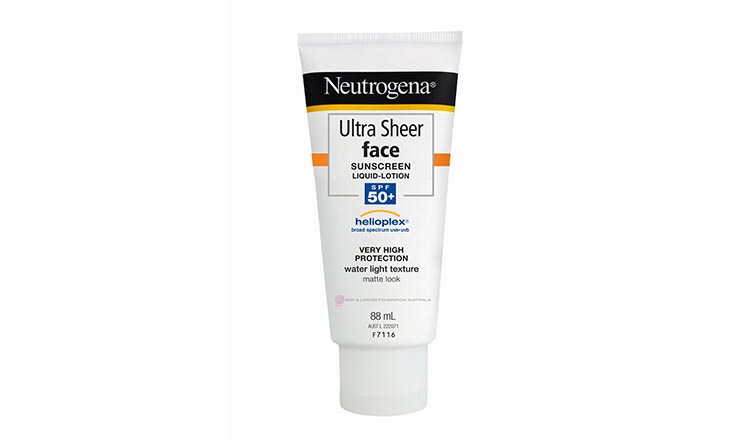Protecting your skin with sunscreen and other measures such as shade and protective clothing will keep your skin looking younger and help protect you against skin cancer. Australia has the highest incidence of skin cancer in the world. More than 1700 Australians die from skin cancer each year, and two out of three Australians will get some sort of skin cancer before the age of 70.
And let’s not forget that sun damage ages your skin by causing or accelerating wrinkles, pigmentation, sun-spots, broken blood vessels and a loss of elasticity. Using a broad spectrum sunscreen on your face every day is something you can do right now to prevent further skin ageing.

After something with high-levels of protection? Try Neutrogena Ultra Sheer Face Sunscreen SPF50+, $16.99. Bonus: it’s also quickly absorbed into skin, so you can pop your foundation on over the top.
Easily burnt individuals with fair skin are obviously in need to prevent skin cancers and sun spots but darker skin people will develop photo ageing from sun exposure with brown sun spots and pigmentation disorders. What’s really bad is that everybody also wrinkles from sun exposure – it is just a matter of what age this happens.
Our melanocyte cells (pigment cells) are like factories that make packages of colour. These packages of colour come out the factory door and are transported up through the layers to the skin cells above. And because these packages of colour then overlie the melanocyte cells, they protect them and other important cells that live in the bottom layer of the epidermis in much the same way the shade of a tree protects us. Darker skin produces many more packages of colour than fair skin, so people with lighter skin are more susceptible to burn.
A tan is the skin’s way of protecting itself against the elements, in particular UV damage but comes at a price. You need to burn a little before the tan takes hold to prevent further damage to the delicate basal cells of the skin and the melanocytes that also reside in this layer.
The UV gets into the genetic DNA of the cells disrupting this and causing skin cancers to develop over time. So pale skin people are more susceptible than the darker-skinned.

This is a sponsored post by Neutrogena. All opinions expressed by the author are authentic and written in their own words.







